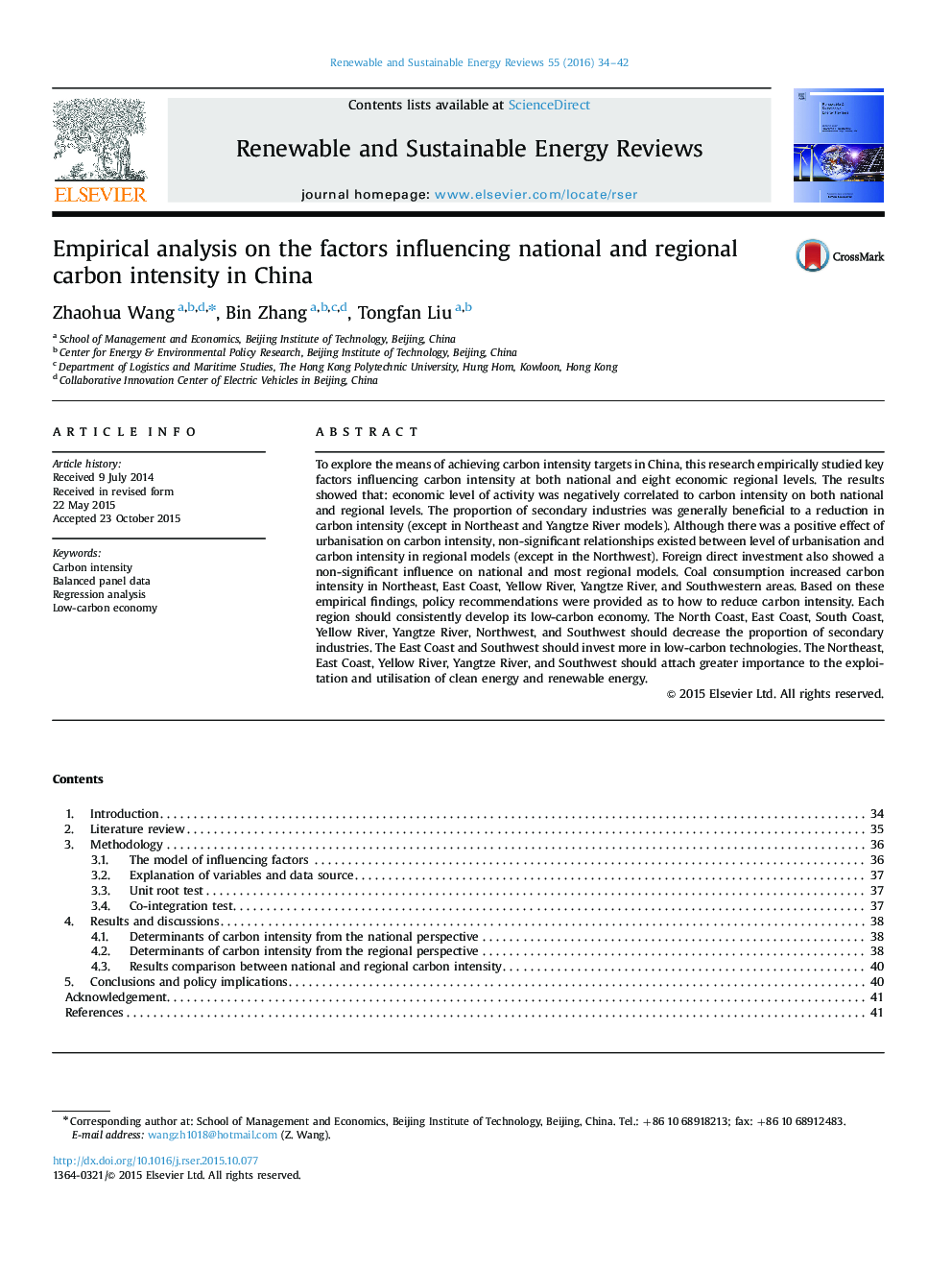| Article ID | Journal | Published Year | Pages | File Type |
|---|---|---|---|---|
| 8115120 | Renewable and Sustainable Energy Reviews | 2016 | 9 Pages |
Abstract
To explore the means of achieving carbon intensity targets in China, this research empirically studied key factors influencing carbon intensity at both national and eight economic regional levels. The results showed that: economic level of activity was negatively correlated to carbon intensity on both national and regional levels. The proportion of secondary industries was generally beneficial to a reduction in carbon intensity (except in Northeast and Yangtze River models). Although there was a positive effect of urbanisation on carbon intensity, non-significant relationships existed between level of urbanisation and carbon intensity in regional models (except in the Northwest). Foreign direct investment also showed a non-significant influence on national and most regional models. Coal consumption increased carbon intensity in Northeast, East Coast, Yellow River, Yangtze River, and Southwestern areas. Based on these empirical findings, policy recommendations were provided as to how to reduce carbon intensity. Each region should consistently develop its low-carbon economy. The North Coast, East Coast, South Coast, Yellow River, Yangtze River, Northwest, and Southwest should decrease the proportion of secondary industries. The East Coast and Southwest should invest more in low-carbon technologies. The Northeast, East Coast, Yellow River, Yangtze River, and Southwest should attach greater importance to the exploitation and utilisation of clean energy and renewable energy.
Related Topics
Physical Sciences and Engineering
Energy
Renewable Energy, Sustainability and the Environment
Authors
Zhaohua Wang, Bin Zhang, Tongfan Liu,
